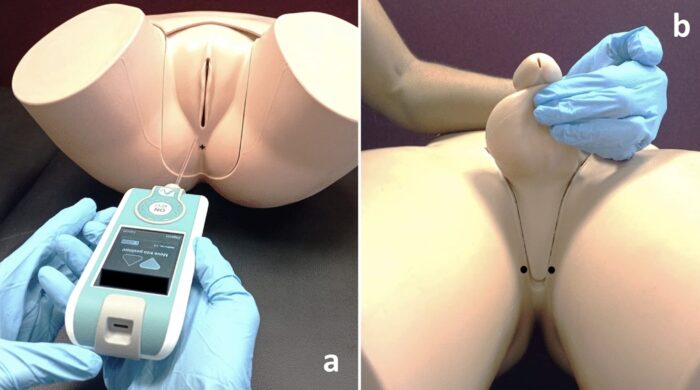Publications

Between‐sexes differences in lumbopelvic muscle mechanical properties of non‐climacteric adults: a cross‐sectional design
Authors: Daiana Priscila Rodrigues‐de‐Souza 1, 2, Azahara Casas‐Castro 1, Maria Cristina Carmona‐Perez 1, Lourdes Garcia‐Luque 1, Sandra Alcaraz‐Clariana 1, Juan Luis Garrido‐Castro 2, 3, Francisco Alburquerque‐Sendin 1, 2
Affiliations:
- Department of Nursing, Pharmacology and Physical Therapy, Faculty of Medicine and Nursing, University of Cordoba, 14004 Cordoba, Spain
- Maimonides Biomedical Research Institute of Cordoba (IMIBIC), 14004 Cordoba, Spain
- Department of Computer Science and Numerical Analysis, Rabanales Campus, University of Cordoba, 14071 Cordoba, Spain
Journal: Nature - Scientific Reports - December 2023, Volume 13, Article no. 21612 (DOI: 10.1038/s41598-023-48984-8)
-
Field & Applications:
- Medical
- Normatives
- Muscle symmetry
- Methodology
- Women's health
- Validity
- The external application of myotonometry, its innocuousness, speed of application, bilateral evaluation, and low need for training, increase the interest of this method in the clinical setting for the assessment of lumbopelvic MMPs.
The lumbopelvic muscle mechanical properties (MMPs) are clinically relevant, but their dependence on sex remains unknown. Therefore, this study aimed to identify if lumbopelvic MMPs depend on the sex in a young adult population.
Thirty-five healthy nulliparous women and 35 healthy men were analyzed (age range: 18–50). Lumbopelvic MMPs, that is, tone, stiffness, elasticity, relaxation and creep, assessed with MyotonPRO®, and pelvic floor (PF) health questionnaires were compared between-sexes. Intra-group correlations between sociodemographic and clinical data, and MMPs were also determined.
The MMPs of PF were different between healthy non-climacteric adults of both sexes, with women showing higher values of tone and stiffness and lower values of elasticity and viscoelastic properties than men (in all cases, p < 0.03). At lumbar level, tone and stiffness were higher for men at both sides (in all cases, p < 0.04), and relaxation was lower at left side (p = 0.02). The MMPs showed few correlations with sociodemographic data within women. However, within males, there were positive correlations for PF stiffness and viscoelastic parameters with age, BMI and function (0.334 < r < 0.591) and, at lumbar level, negative correlations for tone and stiffness ( − 0.385 < r < −0.590) and positive correlations for viscoelastic properties (0.564 < r < 0.719), with BMI.
This indicated that between-sexes differences of lumbopelvic MMPs depend on the specific location of assessment in healthy non-obese young individuals. Women show higher tone and stiffness and lower elasticity and viscoelasticity than men, at PF level.

Figure 1. Assessment of the MMPs with MyotonPRO® device at PF level (anatomical models). (a) Woman evaluation with the 100 mm long probe (right side); (b) Anatomic location for the assessments in man (black dots).
Between-sexes differences in lumbopelvic MMPs depend on the specific location of the assessment in healthy non-obese young individuals, only recreationally active. Thus, the MMPs of PF differ between healthy non-climacteric adults of both sexes, with women showing higher values of tone and stiffness and lower values of elasticity and viscoelastic properties than men. In contrast, lumbar MMPs show less and lower differences. Only MMPs of men are related to age, BMI and clinical status of PF. Lumbopelvic MMPs evaluation with external tonometry could be relevant in clinical setting, due to its innocuousness and bilateral applicability.


